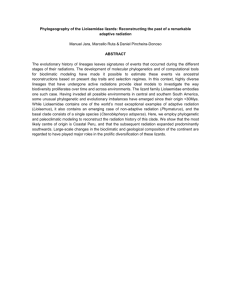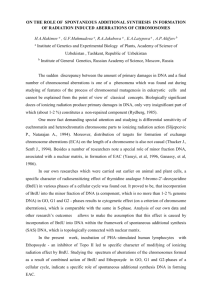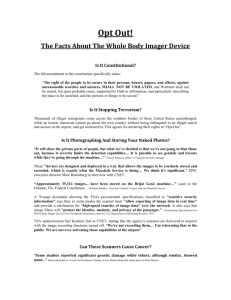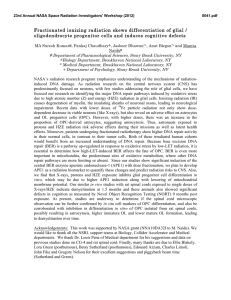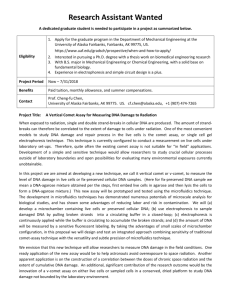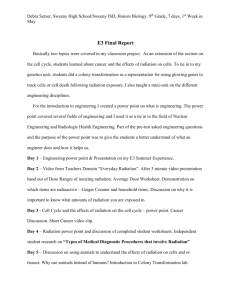hapter 6 Molecular and Cellular Radiation Biology
advertisement
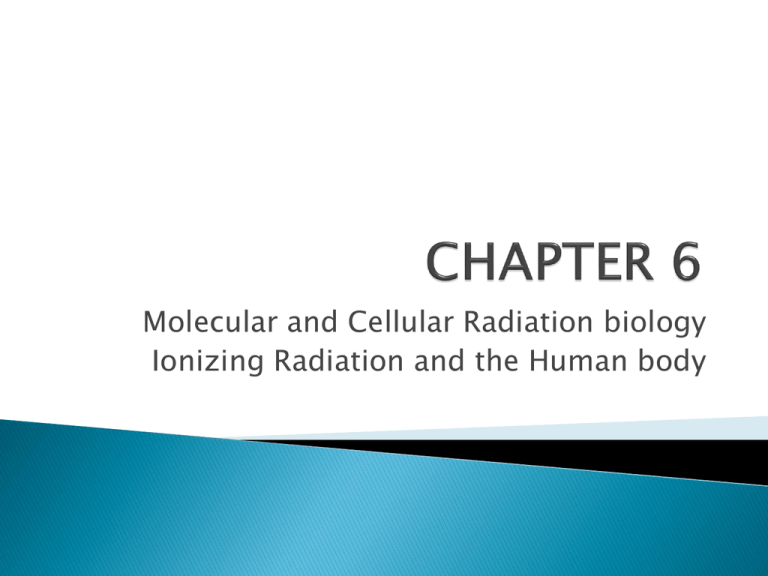
Molecular and Cellular Radiation biology Ionizing Radiation and the Human body From x-rays, gamma, or high energy particulate radiation ◦ ALPHA, BETA ◦ Alpha=two protons and two neutrons attracts negatively charged electrons Ionized atoms will not bond properly in molecules LET RBE OER X-ray/gamma rays Streams of particles with no mass or charge Penetrating Sparsely ionizing Interacts randomly Damage via indirect action Sublethal damage Particles of mass and charge Alpha, neutrons What other characteristics? Low High ◦ Risk of damage to DNA/Probability of interaction with DNA ◦ What radiations are considered low LET? ◦ Risk of damage to DNA/ DNA/Probability of interaction with DNA ◦ Internal contamination ◦ What radiations are considered high LET? 250 kVp of known radiation (usually xray) over dose of test radiation=biologic effect (Box 5-2) Used in animals Weighting factor of radiation used to determine biologic damage DOSE REQUIRED TO PRODUCE AN EFFECT IN AN OXYGEN DEPRIVED ENVIRONMENT VS A NORMAL OXYGEN ENVIRONMENT OER IS HIGH FOR LOW LET THE OPPOSITE FOR HIGH LET THE DIFFERENCE IS DUE TO DIRECT AND INDIRECT EFFECT BOTTOM LINE…..IF IONIZATION FROM EITHER EFFECTS DISTURBS THE CHEMICAL BALANCE OF THE CELL, THE CELLULAR ACTIVITY BECOMES ABNORMAL OR THE CELL CAN EVEN CEASE TO FUNCTION IMPACTS THE DNA OCCURS MORE OFTEN WITH HIGH LET INTERACTS WITH WATER OCCURS MORE OFTEN WITH LOW LET RADIOLYSIS OF WATER/FREE RADICALS SINGLE STRAND BREAK figure 6.6 DOUBLE STRAND BREAK figure 6-7/IN SAME RUNG figure 6-8 MUTATION figure 6-9 COVALENT CROSS LINKS figure 6-10 CHROMOSOME BREAKS CHROMOSOMAL FRAGMENTS CHROMOSOME ANOMALIES Structural changes HIGHLY MITOTITIC ABNORMALLY DIVIDE LARGE NUCLEUS Relate this to Bergonie and Tribondeau (pg 102) and direct/indirect effects THE MASTER MOLECULE PG 125

